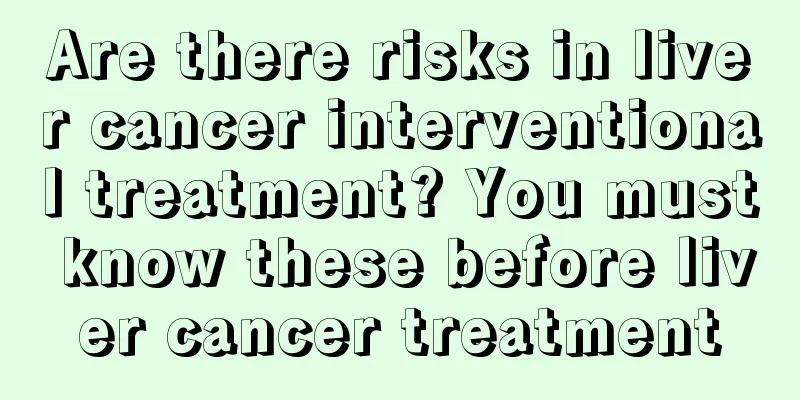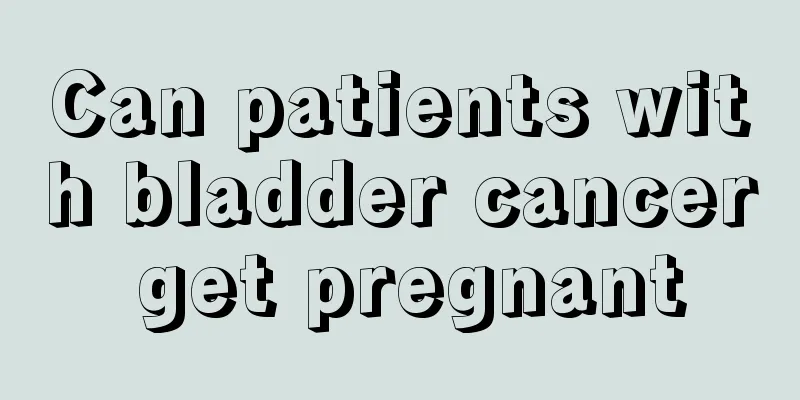Are there risks in liver cancer interventional treatment? You must know these before liver cancer treatment

|
Interventional therapy is a minimally invasive surgical treatment of diseases under the guidance of images. It is the third largest clinical treatment discipline after internal medicine and surgery. Due to the advantages of small wounds, clear effects and fast recovery, interventional therapy is deeply welcomed by patients and doctors and has become a first-line clinical treatment method. With the promotion and popularization of this technology in clinical practice, the complications (risks) of interventional therapy have continued to rise, and doctors and patients should also pay great attention to it. However, the risks of interventional therapy are everywhere. Taking liver cancer patients as an example, half of them will have the following 8 risks when undergoing interventional surgery for liver cancer. What are the risks of interventional treatment for liver cancer? 1. Severe liver dysfunction, severe jaundice, coagulation dysfunction, etc. 2. There is a large amount of ascites or severe liver cirrhosis, and liver function is Child C grade. 3. Portal hypertension with retrograde blood flow and complete obstruction of the portal trunk without collateral vessels. 4. Postoperative infection, such as liver abscess. 5. Patients whose tumors occupy 70% or more of the whole liver (if the liver function is basically normal, a small amount of iodized oil can be used for fractional embolization). 6. The patient's white blood cell count is <3000. 7. Extensive liver cancer metastasis has occurred throughout the body. 8. People with systemic organ failure. Not only do liver cancer patients have postoperative sequelae, but any cancer interventional treatment may have varying degrees of risk, such as paraplegia, cardiovascular and cerebrovascular diseases, massive bleeding, fractures, allergic reactions, peripheral nerve damage, intestinal perforation, and other complications. Many people wonder why interventional surgery, which is a minimally invasive surgery, has such a high risk of complications? Objectively speaking, compared with traditional surgical procedures, the wounds suffered by patients during interventional surgery are significantly smaller, but smaller wounds do not mean less risk. How should patients and doctors correctly treat interventional treatment? Doctors and patients are equally concerned about the dangers of interventional treatment, but they must also face the dangers bravely. When a disease is detected or develops to a certain extent, interventional treatment is required, mainly to reduce the patient's pain or prolong the patient's life span. During treatment, the patient is likely to face new risks brought by the surgery itself, so it is necessary for the patient and his family to weigh the pros and cons and make a clear choice, whether to treat or not. For patients: If interventional treatment is chosen and risks occur during the treatment, the original disease may not be cured and the patient will have to endure other pains brought by complications. The patient will suffer double pain both physically and mentally, and it will also bring a serious financial burden to the family. For doctors: If risks occur after interventional treatment for patients, the reputation that doctors have worked hard for half a lifetime may be destroyed. They also have to endure irrational scolding, malicious claims, threats to doctors' future, disruption of the work environment, and even personal attacks from family members. In addition, there is a lot of pressure from leaders and management departments. In serious cases, they may face suspension, and the whole family will starve. To sum up, we can draw a warning to both doctors and patients: please remember, "Interventional treatment is dangerous and should be chosen with caution." |
<<: What are the common early symptoms of lung cancer? Two common early symptoms of lung cancer
Recommend
Family members must do a good job of caring for patients with uterine cancer
The appearance of uterine cancer has brought many...
Lazy people’s laundry skills
Although every household has a washing machine no...
The dangers of sleeping with your head low and your feet high
Sleeping with the head low and the feet high is a...
Can surgery be performed on patients with high astigmatism?
High astigmatism is a common retinal disease. Whe...
What to eat for growing pains
Life is a very wonderful thing. It is the greates...
4 types of clinical manifestations of prostate cancer
Prostate cancer is a common male malignancy. What...
What are the small issues to pay attention to when checking for lung cancer? 7 small issues to note when checking for lung cancer
Many people feel depressed after hearing that the...
Tips on how to make eyelashes longer
Long and curled eyelashes are what every woman wan...
Can scalp scraping help promote hair growth?
Severe hair loss is mostly caused by staying up l...
What are the clinical symptoms of gallbladder cancer
Cancer is one of the most serious diseases in our...
Is latex paint harmful to the body?
Before moving into a new house, we will decorate ...
How to get rid of fleas on your body
If you have pets at home, fleas are more common. ...
Will nasopharyngeal cancer make it impossible to open the mouth?
Will nasopharyngeal cancer make it impossible to ...
Daily disposable contact lenses
Daily disposable contact lenses are usually refer...
What should I use to wash my hands after peeling green walnuts?
In summer, many green walnuts will appear on the ...









